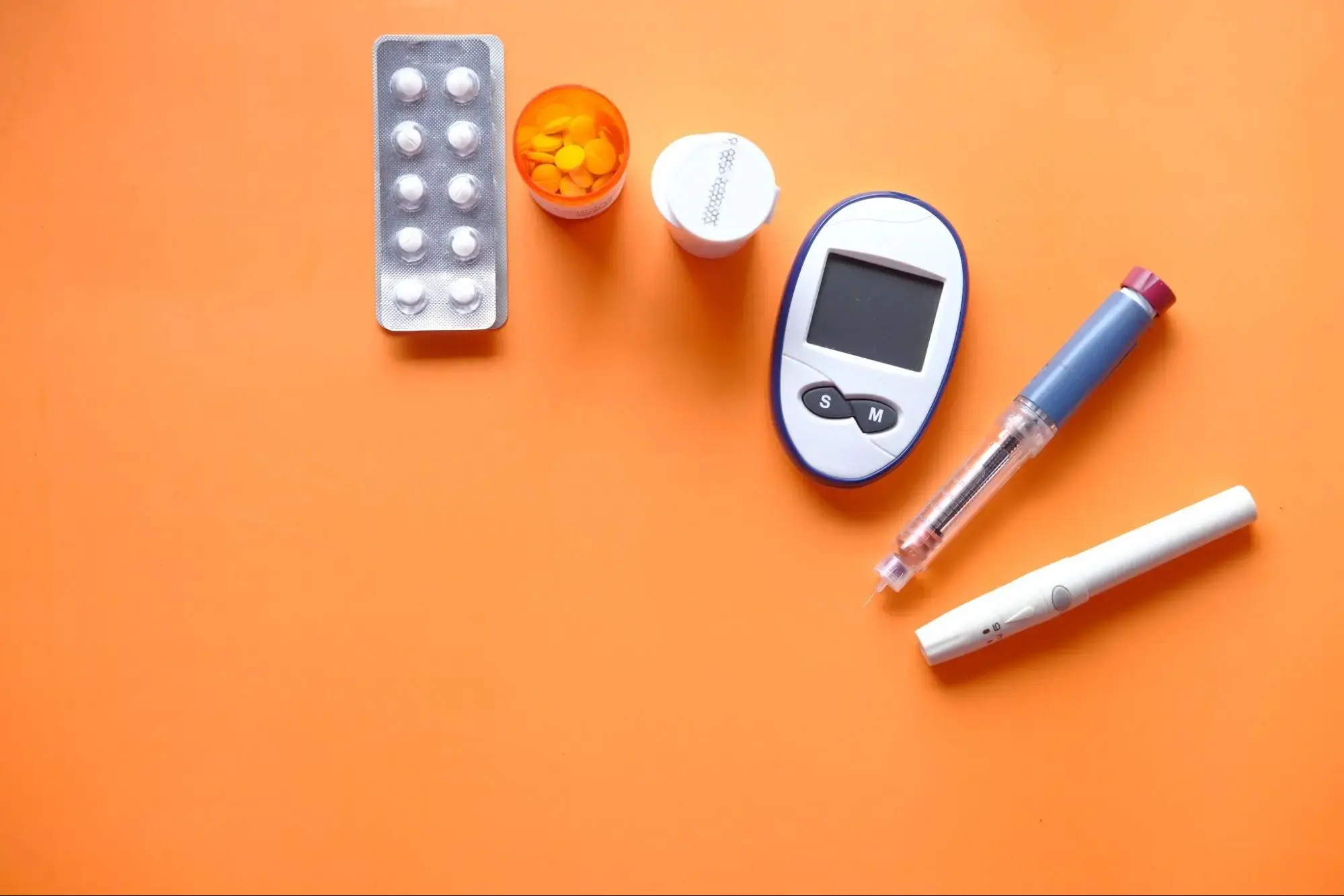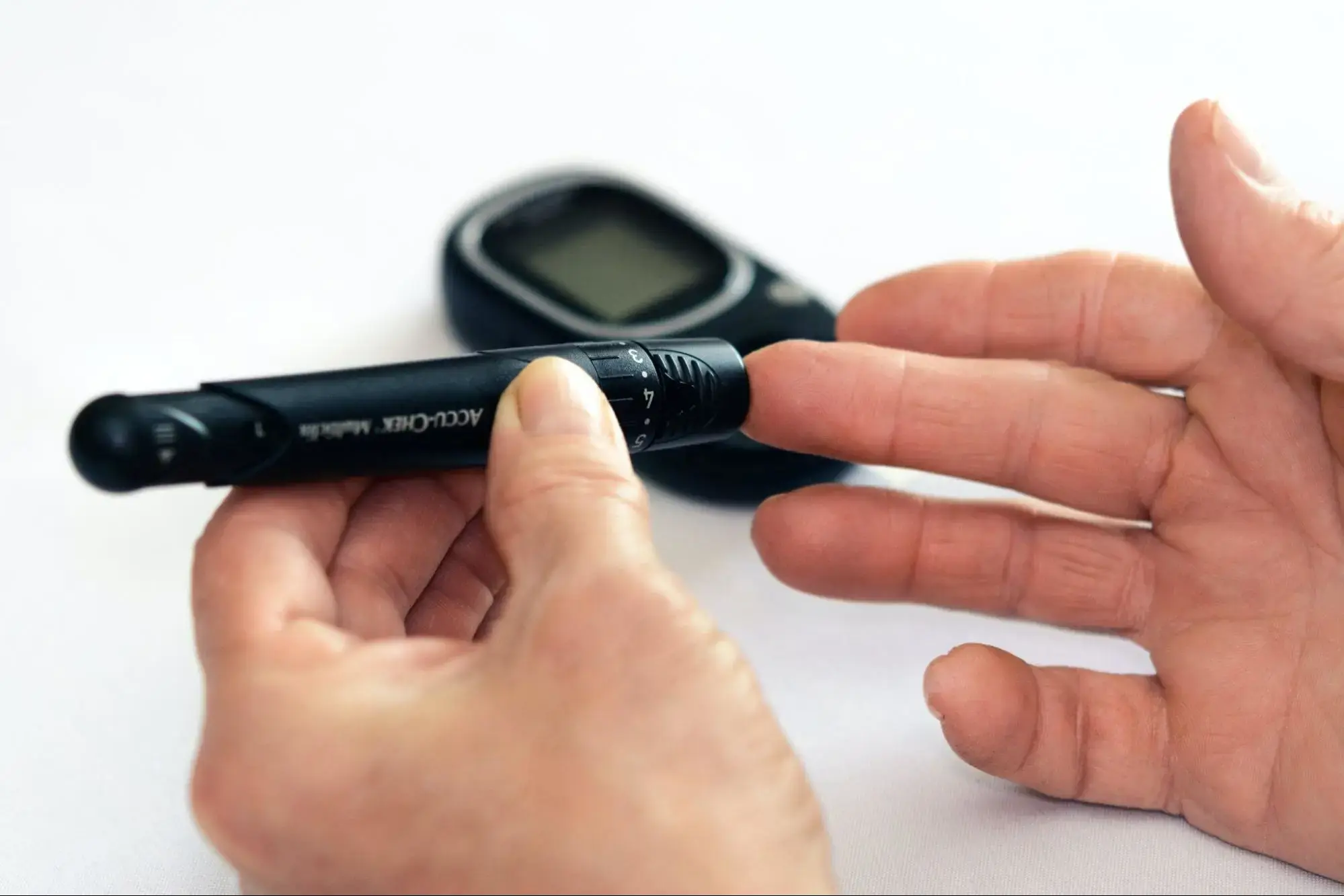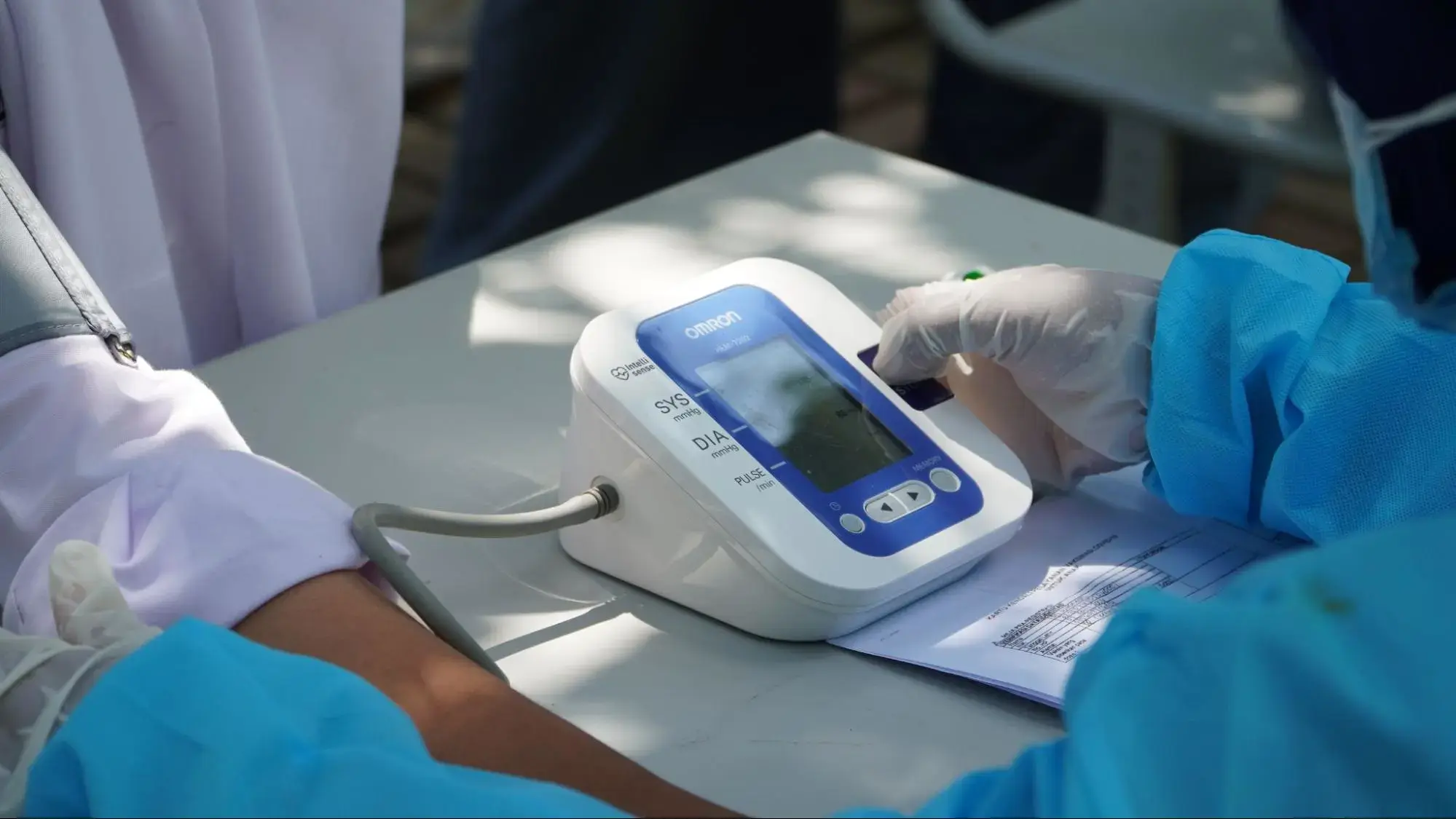Term Life Insurance For Diabetes
Everything you need to know about term life insurance for diabetes and how the condition may affect your coverage.
Our content follows strict guidelines for editorial accuracy and integrity. Learn about our and how we make money.
If you are an American with diabetes, you may be concerned about how this will impact your eligibility for life insurance, or whether you can even get life insurance with the condition.
According to the Centers for Disease Control and Prevention (CDC), 37 million people in the U.S. suffer from diabetes. Approximately 1 in 10 Americans have diabetes, with about 1 in 5 people not knowing that they have it.
This article will discuss term life insurance for people with diabetes and what you should know before you join a plan.
What Is Term Life Insurance?
Term life insurance policies are agreements between policyholders and insurance firms that provide financial protection in the case of death.
Policyholders pay a monthly premium to the insurance company, and the insurance company pays out a death benefit when the policyholder dies.
Term life insurance only provides coverage for a set length of time. The word "term" simply refers to a period of time.
If you choose term life insurance, your coverage will be determined by the number of years specified in the policy.
When a coverage period expires, your contract with the insurance company will end and you will need to buy a new life insurance policy.
The length of your insurance coverage will vary depending on your insurer. You may be able to purchase a term life insurance policy for any time period you prefer.
Here are some of the typical lengths of coverage that people can choose from with a term life insurance plan:
Year by year.
10 years.
15 years.
20 years.
30 years.
Terms You Should Know:
Premiums: These are monthly or annual amounts that policyholders pay to keep their coverage.
Death Benefit: This is the amount paid to the beneficiary of an insurance policy after the policyholder’s death.
Beneficiary: A person who receives the death benefit (payout) from a life insurance policy in the event of the policyholder’s death.
Cash Value: This is the portion of your policy that earns interest and may be available for you to withdraw or borrow against in case of an emergency.

Source: Unsplash
What Is Diabetes?
Diabetes is a collection of disorders that damage your body's ability to use blood sugar (glucose).
Diabetes puts you at risk for a variety of illnesses and procedures, including:
Stroke.
Heart disease.
Hypertension (or high blood pressure).
Negative impact to organs, eyes, and teeth (due to uncontrolled glucose levels).
Kidney disease or failure.
Neuropathy (or nerve damage).
Surgeries (such as bypass surgery or limb amputation).
For example, diabetes is considered a risk factor for most life insurance companies because of the complications that come with this disease.
There are three types of diabetes people can have:
Type 1 Diabetes:Your body does not produce insulin if you have type 1 diabetes. Your immune system targets and destroys the insulin-producing cells in your pancreas.
Type 1 diabetes is most commonly diagnosed in children and young adults, but it can affect anyone irrespective of age. To stay alive, people with type 1 diabetes must take insulin every day.
Type 2 Diabetes:Your body does not generate or manage insulin well if you have type 2 diabetes. Type 2 diabetes can develop at any age, including childhood.
This type of diabetes is the most prevalent type and is more common in middle-aged and older adults.
Gestational Diabetes:
During pregnancy, some women develop gestational diabetes. This type of diabetes usually goes away once the baby is born.
However, if you've had gestational diabetes, you're more likely to develop type 2 diabetes later in life. It's possible that diabetes diagnosed during pregnancy is actually type 2.

Source: Unsplash
Can You Get Life Insurance If You Have Diabetes?
People who have mild or moderate diabetes can purchase term life insurance or permanent life insurance. However, because of their condition and medical history, it can often be more difficult or more costly to get life insurance.
Depending on your policy, you might have to go through underwriting or a medical exam more than once in your life.
Most term insurance plans will have some form of underwriting where you'll have to disclose your health conditions.
Depending on the severity and type of diabetes a person has, they may have to pay higher monthly premiums or go for regular medical exams to keep their coverage.
This may be frustrating for many healthy people who manage their diabetes, but life insurance companies ultimately want to determine a person's risk profile before they allow them to sign a policy.
They use risk profiles to determine the chances of a person dying prematurely, because if this happens, they will be required to pay out a death benefit.
In some cases, a person might be denied coverage if the life insurance company feels that their risk profile is too high. This can happen if a person doesn't manage their diabetes or if they have other conditions, such as high blood pressure or high cholesterol which have been linked to premature death.
What Is Underwriting?
Before a person is allowed to sign a life insurance contract, Iinsurance companies conduct risk assessments which help them figure out the chances of a policyholder dying prematurely.
This process is known as underwriting and it involves an in-depth review of an applicant’s medical history, credit history, and even driving record.
If an applicant is untruthful about a medical condition or health issue at any point of the underwriting process, an insurer can cancel a policy or withhold a death benefit from their beneficiaries.

Source: Pexels
What Types of Life Insurance Are Available for Diabetics?
There are two main types of life insurance that can help provide coverage for individuals with diabetes. They are term life insurance and permanent life insurance.
Term Life Insurance for Diabetics
Term life insurance is typically the most affordable kind of life insurance. It ensures that your rates will not fluctuate over the course of the policy's term, which might be 10, 15, 20, or 30 years.
A term life insurance payout can help your family pay off debts by replacing your income during your peak working years.
If you have well-controlled diabetes, you might want to consider term life insurance. Diabetics are frequently approved for term life insurance, though at a higher price.
Consider greater coverage terms if you are approved for a term life policy. This will prevent your premiums from rising as you age or as your health declines.
Different Types of Term Life Insurance
Level Term Life Insurance
Most term policies are level term life insurance, which guarantees that your death benefit remains the same and that you pay the same price for your policy no matter how long it’s active.
This is a great option for people wanting to ensure that their loved ones are financially secure when they die.
Diminishing Term Life InsuranceDiminishing or decreasing term life insurance follows a similar method to term life insurance, but it has a few key characteristics that make it more appealing.
The annual cost of decreasing term life insurance is fixed. In most cases, policies are less expensive than typical term life insurance. Because the advantages diminish a little each year, companies can provide plans at reduced prices without increasing rates over time.
When you buy a decreasing-term policy, you can choose how long you want it to last. Most insurance providers offer policies with terms between one and 30 years.
For example, decreasing term life insurance might pay out $100,000 in the first year of a 30-year policy. The payout might drop to $98,000 in the second year. The coverage might pay out around $85,000 after ten years. The value continues to decline until the final year, at which point it has no cash value.
Guaranteed Issue Life InsuranceGuaranteed life insurance is designed for people who have had trouble getting regular life insurance due to their risk factors, such as: chronic health conditions, credit ratings, or driving history.
Normally, potential customers must undertake thorough medical assessments and investigations into their health history in order to purchase a life insurance policy, but guaranteed life insurance offers an alternative to these procedures.
Because the insurance company is taking the risk of covering someone without knowing their full medical history, guaranteed life rates are often higher than other policies.
What Is Final Expense Insurance?
Final expense insurance is a type of whole life insurance with a smaller coverage amount and less strict criteria for qualifications.
It works in the same way as other types of permanent life insurance. A person with a final expense life insurance plan pays their insurer a monthly or annual premium. In return, they get financial coverage.
These policies cost less than other types of life insurance and usually don’t require a medical exam, which makes them easier to get.
Some final expense plans even offer a cash value component, which is a living benefit that policyholders can use.

Source: Pexels
Does the Type of Diabetes You Have Impact Your Life Insurance?
Because the different diabetes types require different care and attention, life insurance tends to treat the two as separate cases.
Generally speaking, it is easier to get insurance coverage for type 2 diabetics than for type 1.
Life Insurance for Type 1 Diabetics
It will be difficult for someone with type 1 diabetes to qualify for life insurance, let alone get affordable coverage.
This is partly due to the fact that people with type 1 diabetes must always take medications to manage their condition.
Life Insurance for Type 2 Diabetics
A person with type 2 diabetes, on the other hand, is considerably more likely to be insurable. In general, type 2 diabetes is easier to control than type 1, since a person with type 2 diabetes can still produce insulin.
While type 2 diabetics may be able to find life insurance, the rates for coverage won’t be the same compared to the quotes they would receive if they didn't have diabetes.
However, if your diabetes is well-managed and you are generally healthy, your premium may not be as expensive as it would be for someone who does not have well-managed diabetes.
Younger applicants with type 2 diabetes will see bigger increases in quotes than older applicants.
Do I Need Term Life Insurance?
If you are unsure about the benefits of various life insurance policies, send your questions to Help@PolicyScout.com or call us at 1-888-912-2132 to get personalized assistance from one of our skilled PolicyScout consultants.

Source: Pexels
Why Is It Hard for Diabetics to Get Life Insurance?
Life insurance companies don’t generally offer a life insurance policy specifically designed for diabetics. However, with research and the help of an insurance agent or financial adviser, it is possible for diabetics to find policies that address their individual financial concerns.
Here are some of the factors that influence a diabetic's ability to purchase life insurance:
Type of Diabetes
Type 2 diabetes patients may find it easier to qualify for life insurance than type 1 diabetic patients. Because type 2 diabetes can usually be treated by healthy lifestyle adjustments, most insurance companies consider type 1 diabetes to be riskier than type 2.
Type 1 diabetes, on the other hand, requires frequent blood sugar testing and insulin therapy. If you have type 1 diabetes, your premiums will almost certainly be higher for the same level of coverage.
Disease Management
If you can keep your diabetes under control with lifestyle adjustments, you'll probably pay less in premiums than if you needed medication. You will almost certainly pay higher rates if you are insulin-dependent.
If you have type 2 diabetes, you can usually manage your disease by making some lifestyle adjustments. Type 2 diabetics usually control their condition by:
Eating healthy, balanced meals.
Getting enough sleep.
Exercising regularly.
Managing stress.
Other Health Concerns
You may find it difficult to qualify for life insurance if you have a history of drug misuse if you’re taking other medications, or if have severe health issues in addition to diabetes, such as:
High blood pressure.
Heart disease.
Cancer.

Source: Pexels
No Medical Exam vs. Fully Underwritten Life Insurance
If you suspect you have diabetes-related symptoms or conditions that haven't been diagnosed, this may be a good option for people who don't want to go through the underwriting process or medical exam.
No medical exam term policies normally have maximum coverage of $500,000, whereas no medical exam whole life policies often have maximum coverage of $50,000.
The insurer will still ask you to fill out a diabetes questionnaire and get access to your medical records from your doctors if you choose the no medical exam option.
So, even if you don't have to go through a medical exam, life insurance firms will almost certainly find out if your diabetes isn't well controlled or if you've been diagnosed with additional issues.
For example, let's say you've had numbness in your hands and feet but haven't been diagnosed with neuropathy. If the issue was detected during the medical test and you filed for a fully underwritten term life insurance policy, you could be turned down.
Keep these points in mind if you're considering a no medical exam life insurance policy:
Other life insurance companies, including those that sell no medical exam plans, would have access to the results of the insurer's examination.
If you filed for a no medical exam policy, however, the insurer would still consider you a greater risk since you have diabetes, but they would only assess your risk based on your questionnaire and medical records.
It's critical that you answer all questions truthfully, whether you're applying for no medical exam insurance or fully underwritten coverage. Otherwise, if you die, your life insurance coverage may be discontinued, or your family's life insurance claim may be denied.

Source: Pexels
What If You Were Diagnosed with Diabetes after Buying Life Insurance?
If you get a diabetes diagnosis after buying a term life insurance policy, your payments will stay the same until the end of your term, which is commonly five, 10, 20, or 30 years.
You may choose to let your policy expire at the end of your term or change it to a permanent policy before the policy's expiration date or maximum age.
Some firms may allow policyholders to skip the medical test and use their own health rating system from their initial application if they change their coverage.
You do not need to be concerned about your coverage being terminated if you have purchased a permanent life insurance policy. As long as your premiums are paid on time, you will be insured for the rest of your life at the pre-diagnosis rates for permanent policies like whole life and universal life.
Your health will be re-evaluated and your new rates will reflect your diagnosis if you want to renew the policy or move to a new life insurance company. If you have severe diabetes, you may be unable to renew your insurance and will need to consider a guaranteed issue policy.
Where Can I Learn More about Life Insurance Options?
If you’re among the 37 million American adults with diabetes, you’ll probably be able to get some type of term life insurance. However, coverage will likely come at a steeper price than coverage for someone without diabetes.
If you’re still unsure about term life insurance, and how to get coverage for diabetes, send your questions to Help@PolicyScout.com or call us at 1-888-912-2132 to get personalized assistance with finding a plan.
We also have loads of articles to help you understand costs, enrollment options, different plans, and coverage for the various types of life insurance at PolicyScout’s life insurance hub.